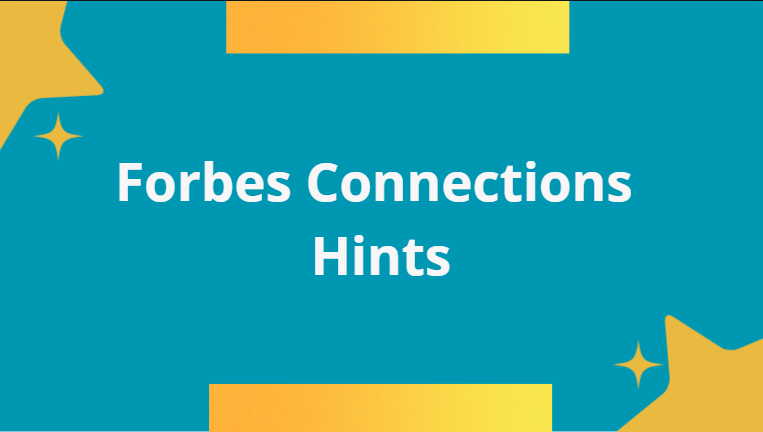“Forbes Connections Hints” usually refer to the hints and clues provided by Forbes writers or contributors to help players solve the NYT Connections puzzle. Forbes often publishes daily or weekly hint guides, explanations, and answers to help readers group words correctly.
The NYT Connections game gives you 16 words each day. You must split them into 4 groups of 4, where each group shares a common theme. Forbes provides hints and sometimes partial answers so you don’t get stuck.
Why Use Forbes’ Hints?
- Save time: If one group is very hard, a hint can help you see it faster.
- Learn thinking patterns: Seeing how hints connect words helps you train your mind for future puzzles.
- Avoid frustration: Sometimes you’re nearly there but miss just one word—hints can guide you.
- Confirm choices: You can check whether your grouping ideas make sense.
How Forbes Provides Connections Hints
Forbes hints often follow a pattern in each daily article:
- Category hints—Words like “Yellow group—______” or “Blue group—______” that point to the theme of one group.
- One sample word per group—They sometimes reveal one word in each group to help you start placing others.
- Explanations of the groups—They describe what each group means (e.g., “Purple group—home fixtures”).
- Full answer (spoiler)—At the end of the article, they often provide the full grouping for those who want to check.
Using those hints, players can deduce where the remaining words fit.
Tips to Use Hints Wisely
- Use the category hint first to see which words might belong there.
- Match one sample word with others that share the same pattern or meaning.
- Cross-check: a word might fit two groups; see which group fits best overall.
- Only see the full answer after you try. Otherwise, you miss the practice benefit.
Example: How a Hint Helps
Imagine Forbes gives:
- Yellow group hint: “getting cozy”
- Sample word: SPOONING
From “getting cozy,” you may think of words like “snuggling,” “hugging,” and “cuddling.” If you see those words among the 16, group them with SPOONING. That reveals one full group. Then you use elimination to group the rest. This is exactly what Forbes did for a past Connections game.
When to Use or Skip Hints
Situation Use Hint Skip Hint You are stuck on one group but solved others. ✅You are on a streak and want a full challenge. ✅You want to learn how writers think. ✅You want to test your full skill. ✅
It’s okay to peek when you need help, but try solving it first.
Common Hint Patterns Used by Forbes
- Color-coded hints: Forbes labels groups by colors (yellow, blue, green, and purple) just like NYT does.
- Wordplay or pun hints: Some hints involve double meanings or wordplay.
- Theme hints: Short phrases like “starting with titles” or “home fixtures.”
- One-word sample: They give one word per group to anchor your thinking.
Once you see these patterns, you’ll read Forbes hints faster and use them better.
How to Improve Without Always Relying on Hints
- Practice daily puzzles without help for certain groups.
- Notice repeated themes (colors, verbs, objects, etc.).
- Keep a notebook of past group structures and patterns.
- Try to think of alternative groupings and test them.
- Gradually reduce hint use—just use one per puzzle, not full answers.
FAQs
Q1. Are Forbes’s hints always correct?
Yes, Forbes uses reliable sources (usually the NYT puzzle author or expert) to publish accurate hints and answers.
Q2. Do hints spoil the fun?
They might spoil some parts, but you can choose to look only at category hints or sample words and avoid full answers until you finish.
Q3. Can I use hints after I solve it?
Yes—after solving, read the hints and explanations. You’ll see alternative ways to think about the groups.
Q4. Do they publish hints daily?
Generally yes, Forbes posts a “Connections Hints” article regularly on days when NYT publishes the puzzle.
Q5. Do hints always give one sample word?
Often they do. But sometimes they only hint at themes or group descriptions. It depends on the puzzle difficulty.
Conclusion
Forbes Connections Hints are useful tools to help you solve NYT Connections puzzles. They blend helpful clues, sample words, and full answers. Use them smartly: try solving first, peek selectively, and study how hint writers think. Over time, you’ll need them less and enjoy solving more on your own.

